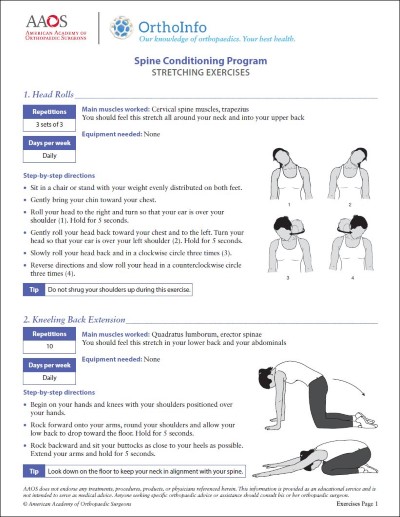Staying Healthy
Preventing Back Pain: Tips for New Parents
Back pain is common during pregnancy. Usually, the pain diminishes within a few weeks after delivery. But back pain may return as you begin lifting and carrying your infant on a daily basis. As your baby grows, the weight load increases and back pain can result.
Caring for an infant puts stress on your back. Lifting your baby can be especially hard on your spine. Initially, you may be lifting the 7- to 10-pound baby up to 50 times a day. By the time your child is 1 year old, you are lifting and carrying 17 pounds. Two years later, you will be lifting a 25- to 30-pound child.
In addition, many new parents spend a lot of time bending over their babies and holding that position for long periods of time.
Fortunately, there are many things you can do to prevent back problems, such as modifying your activities and exercising to strengthen your spine.
Preventing Back Pain
Here are ways that new mothers can help reduce their risk of injury and back pain after giving birth. Many of these tips also work well for new parents who did not give birth.
General Conditioning
- Speak with your obstetrician about when you can start exercising again after giving birth and which kinds of exercises are safe for you to do. Discuss goals that are realistic in terms of post-pregnancy activity levels. This will vary greatly depending on how easy or difficult your pregnancy and/or delivery were. If you had a Caesarian-section (C-section) delivery, it may take longer before you can begin exercising.
- When you are cleared for exercise, begin trying to restore your hip and back flexibility with stretching exercises or light yoga.
- Participating in a group exercise class (in person or virtually) can be more interesting than exercising alone and can help ensure that your workout is safe and balanced. Core muscles weaken during pregnancy and after a C-section delivery; taking a yoga or pilates class can help strengthen these muscles and may help prevent or reduce back pain. Of course, workouts that strengthen the core muscles are beneficial for everyone.
Lifting Your Baby
- To pick up a child from the floor, bend at your knees — not at your waist. Squat down, tighten your stomach muscles and lift with your legs.
- Do not stretch your arms out to pick up your baby. Bring your baby close to your chest before lifting. Avoid twisting your body while holding your baby.
Feeding Your Baby
- To avoid upper back pain caused by breastfeeding, do not bend over your baby to breastfeed. Bring your baby to your breast. A pillow or two placed on your lap will help bring your baby up to you.
- While you are nursing, sit in an upright chair rather than a soft couch.
- Remove the high chair tray when you are trying to put the baby in or take the baby out of the high chair.
Carrying and Traveling With Your Baby
- Consider using a front pack to carry your baby when you are walking. This type of carrier can help prevent back pain by distributing your baby's weight evenly across your body.
- If possible, do not carry your child on your hip — this overloads the back muscles — but if you must, use a hip holster.
- Do not stand outside the car and try to place your child in the car seat. Kneel on the back seat as you place your baby into the car seat. Because the safest place for a child's car seat is in the middle of the backseat, you can sit next to the car seat while you place the child into the seat.
- Infant car seats are heavy, and they get heavier as your infant grows. Rather than carrying your infant in the car seat, consider fastening the seat into place in the car first, then bring your baby outside separately and strap them into the seat.
Contributed and/or Updated by
Peer-Reviewed by
AAOS does not endorse any treatments, procedures, products, or physicians referenced herein. This information is provided as an educational service and is not intended to serve as medical advice. Anyone seeking specific orthopaedic advice or assistance should consult his or her orthopaedic surgeon, or locate one in your area through the AAOS Find an Orthopaedist program on this website.








